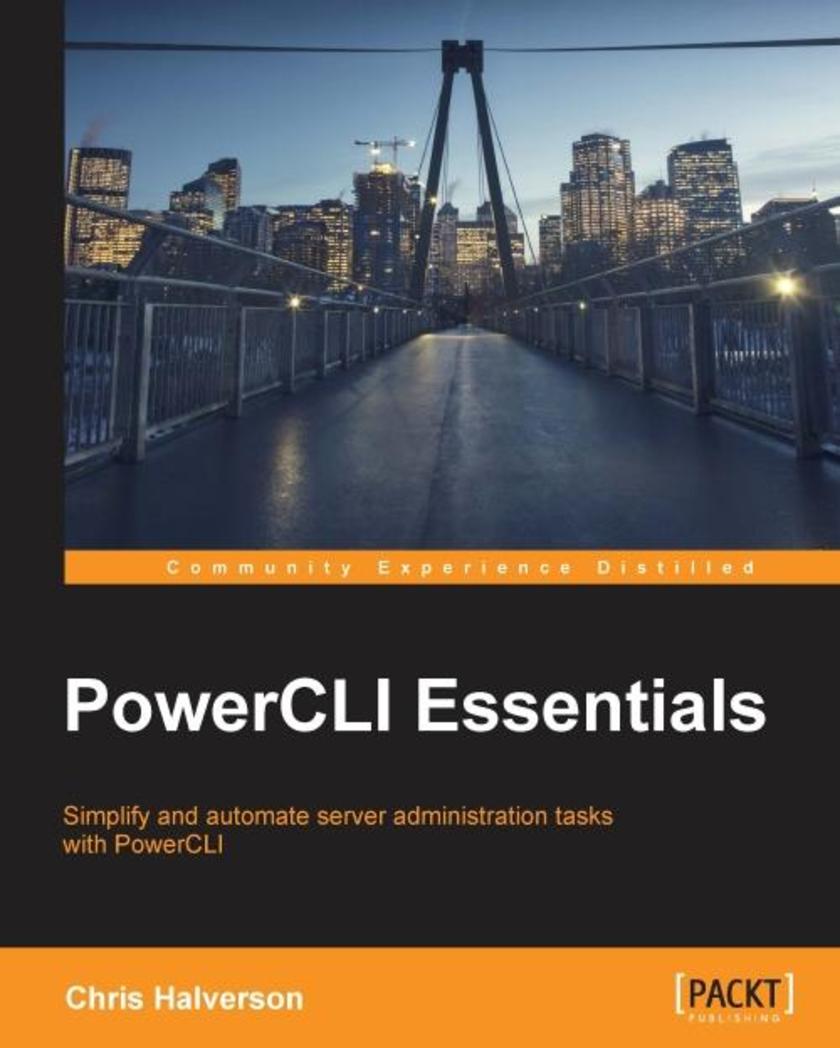
PowerCLI Essentials
¥71.93
Simplify and automate server administration tasks with PowerCLI About This Book Automate VMware’s VSphere environment by learning the essentials of PowerCLI Impress your peers by developing *s to perform administration tasks Discover the intricate workings of PowerCLI through simple and real-life examples Who This Book Is For PowerCLI Essentials is focused toward virtualization professionals and system administrators who want to discover and learn about the automation techniques associated with PowerCLI for complex virtual environments. What You Will Learn Download and install PowerCLI and its basics as well as the basics of PowerShell Enchance your scritping experience Build longer *s and simpler reports Relate a task in VMware administration to a PowerCLI * Discover methods to acquire and change information remotely Set up orchestrator to manage your workflow In Detail Have you ever wished you could automatically get a report with all the relevant information about your VMware environments in exactly the format you wantOr that you could automate a crucial task that needs to be performed on a regular basisPowerful Command Line Interface (PowerCLI) *s do all these things and much more for VMware environments. PowerCLI is a command-line interface tool used to automate VMware vSphere environments. It is used to handle complicated administration tasks through use of various cmdlets and *s, which are designed to handle certain aspects of VSphere servers and to help you manage them. This book will show you the intricacies of PowerCLI through real-life examples so that you can discover the art of PowerCLI *ing. At the start, you will be taught to download and install PowerCLI and will learn about the different versions of it. Moving further, you will be introduced to the GUI of PowerCLI and will find out how to develop single line *s to duplicate running tasks, produce simple reports, and simplify administration. Next, you will learn about the methods available to get information remotely. Towards the end, you will be taught to set up orchestrator and build workflows in PowerShell with update manager and SRM *s. Style and approach Each and every topic in this book is explained in a very easy-to-follow fashion with real-life, simple examples so you’ll get an idea not only about working with PowerCLI, but will also get an idea about *ing.
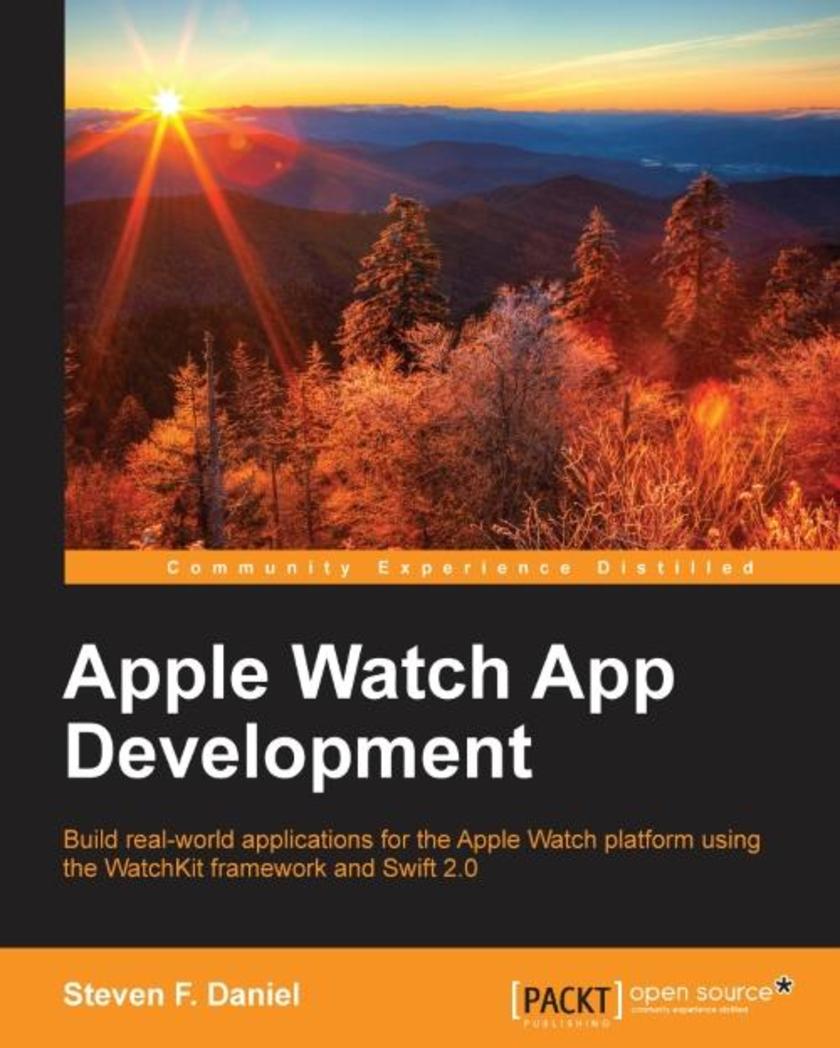
Apple Watch App Development
¥80.65
Build real-world applications for the Apple Watch platform using the WatchKit framework and Swift 2.0 About This Book Find out how to download and install the Xcode development tools before learning about Xcode playgrounds and the Swift programming language Discover everything you need to know about the WatchKit platform architecture, its classes, as well its limitations This book introduces you to the very latest mobile platform with hands-on instructions so you can build your very own Apple Watch apps Who This Book Is For This book is for developers who are interested in creating amazing apps for the Apple Watch platform. Readers are expected to have no prior experience of programming. What You Will Learn Navigate within the WatchKit interface using the page-based, modal, and hierarchical navigation techniques Work with context menus to allow your users to interact with the Apple Watch and respond to their actions to perform a task Use the MapKit framework to display a map within the WatchKit interface to track the user's current location Build effective user interfaces for the WatchKit platform and integrate iCloud capabilities to synchronize data between the iOS app and the WatchKit UI Design your apps for the Apple Watch platform by adhering to the set of User Interface design guidelines set out by Apple Reinforce image caching to display animations within the Apple Watch user interface Explore WatchKit tables, which allow your users to purchase groceries and pay for them using Apple Pay Analyze the new layout system to ensure that your Apple Watch apps work with various screen sizes In Detail Wearable are the next wave of mobile technology and with the release of Apple’s WatchKit SDK, a whole new world of exciting development possibilities has opened up. Apple Watch App Development introduces you to the architecture and possibilities of the Apple Watch platform, as well as an in-depth look at how to work with Xcode playgrounds. Benefit from a rapid introduction to the Swift programming language so you can quickly begin developing apps with the WatchKit framework and the Xcode Development IDE. Get to grips with advanced topics such as notifications, glances, iCloud, Apple pay, closures, tuples, protocols, delegates, concurrency, and using Swift Playgrounds, with each concept is backed up with example code that demonstrates how to properly execute it. Finally, discover how to package and deploy your Watch application to the Apple AppStore. By the end of this book, you will have a good understanding of how to develop apps for the Apple Watch platform, and synchronize data using iCloud between the wearable and the iOS device. Style and approach This book takes a step-by-step approach to developing applications for the Apple Watch using the Swift programming language and the WatchKit UI. Each topic is explained in a conversational and easy-to-follow style.
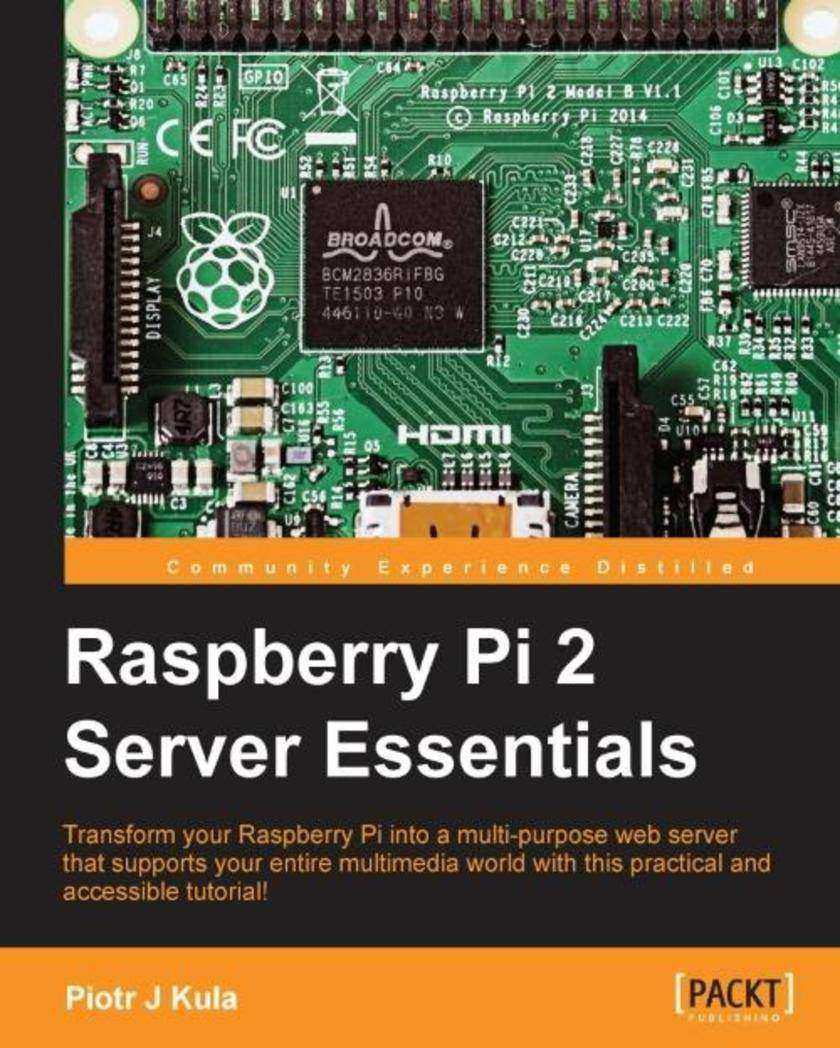
Raspberry Pi 2 Server Essentials
¥54.49
Transform your Raspberry Pi into a multi-purpose web server that supports your entire multimedia world with this practical and accessible tutorial! About This Book Host websites, games, and even stream HD videos with the impressive power of Raspberry Pi 2 Get to grips with embedded programming by turning your Pi into the cloud server that can be used to power Internet of Things projects Make the Raspberry Pi 2 the center of your latest tech experiments and discover how it can manage and host resources Who This Book Is For Seeking inspiration for some new tech projectsWant to get more from your Raspberry PiThis book has been created especially for you! What You Will Learn Host your Raspberry Pi as a web server using the minimum power resources Connect your Pi to the Internet and perform network benchmarking Explore the cross-platform features of the Pi as you run Python, Node.JS, ASP.NET, and PHP all in one place Share files over the Internet using your Pi as a file server Turn your Pi into a game server, host and engage into playing Enjoy live HD video streaming and exclusive real-time text overlays In Detail There’s no end to what you can do with a Raspberry Pi – it makes a huge range of tech projects possible. This book shows you how to transform it into a multipurpose web server, able to store and manage resources that lets you build some truly innovative and impressive computing creations. You’ll learn how to use your Raspberry Pi 2 to host a website using a range of different languages, host a game server, store files, and run everything from a media center to a cloud network. If you want to take control of your technological world, start building your own server and find out what’s possible with the Raspberry Pi microcomputer. Begin by getting your Pi set up – follow each step as the book shows you how to prepare a network and configure the additional features that you’ll need to build your projects. Once you’ve done this you’ll dig a little deeper and set up your pi as a file server, making sure it’s built for speed using a range of different tools, including Python, Node.js and ASP.NET. Following this the book shows you how to extend your server to allow you to host games, and stream live HD video before customizing it even further to create a fully-fledged media center. It doesn’t stop there however – the book then dives into the exciting world of the Internet of Things (IoT). You’ll learn how to install Windows IoT onto your Raspberry Pi, the operating system that’s driving embedded software projects all around the world. Once you’ve done this you’ll be ready to explore IoT further, as the book shows you how to use your device to host a cloud network that can form the basis of a wider IoT project. Style and approach Packed with plenty of practical examples that walk you through a number of Raspberry Pi projects, this book is an accessible journey into embedded computing and Internet of Things.
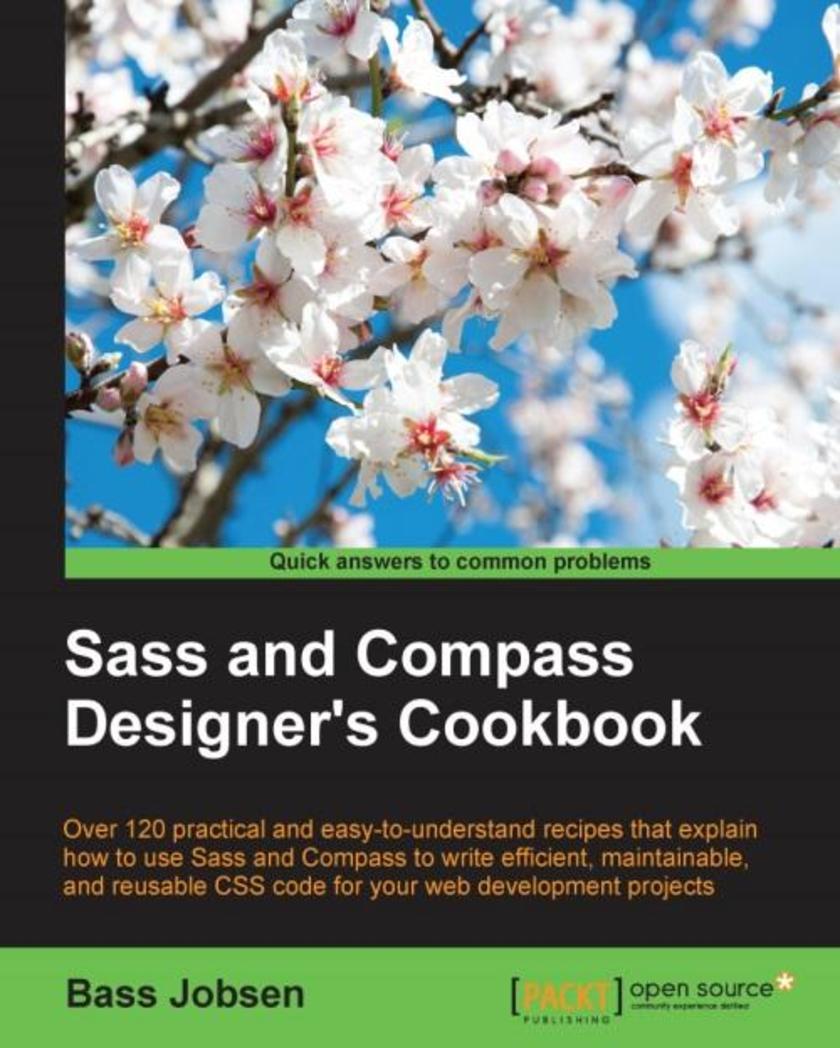
Sass and Compass Designer's Cookbook
¥90.46
Over 120 practical and easy-to-understand recipes that explain how to use Sass and Compass to write efficient, maintainable, and reusable CSS code for your web development projects About This Book Leverage Sass to make your CSS code maintainable, reusable and prevent code duplications Shorten debug time with Sass when creating complex CSS code for different browsers and devices Write easy and bullet-proof CSS with Compass using this step-by-step and detailed guide Who This Book Is For This book is mainly intended for web developers and designers who are comfortable with CSS and HTML. If you are someone with some experience with CSS, you will find the learning curve of learning Sass syntax to be less steep. Basic knowledge of web development is helpful but you don't have to be a programmer to understand Sass. What You Will Learn Spend less time debugging code Compile Sass code into readable and maintainable CSS Integrate Sass in your own projects Reuse your code to prevent code duplications Write reusable and portable CSS code Make use of pre-built and established code written by other developers Reduce development and maintenance time of your projects Set up a development environment with Gulp In Detail Sass and Compass Designer's Cookbook helps you to get most out of CSS3 and harness its benefits to create engaging and receptive applications. This book will help you develop faster and reduce the maintenance time for your web development projects by using Sass and Compass. You will learn how to use with CSS frameworks such as Bootstrap and Foundation and understand how to use other libraries of pre-built mixins. You will also learn setting up a development environment with Gulp. This book guides you through all the concepts and gives you practical examples for full understanding. Style and approach This book is the perfect mix of essential theory combined with real-life examples and problems, with clear explanations of the more sophisticated Sass concepts. Learn Sass and Compass with practical and well-explained example code. This book follows a problem and solution approach that is convenient to understand and follow.
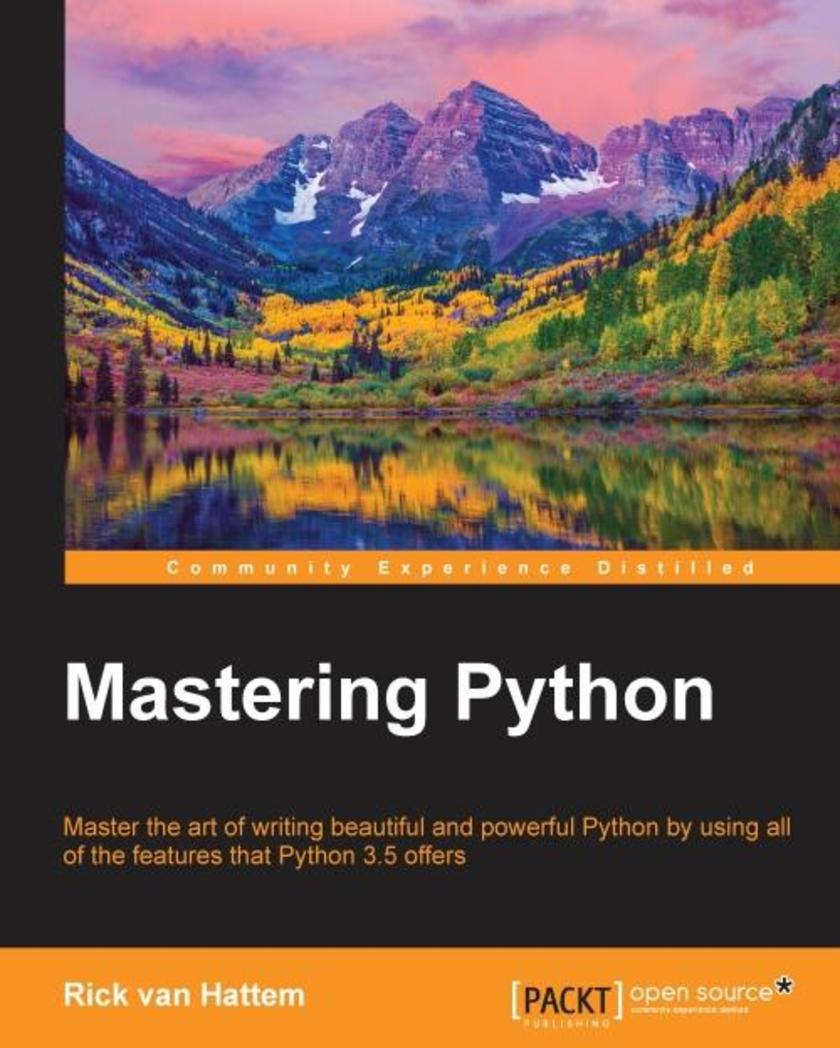
Mastering Python
¥71.93
Master the art of writing beautiful and powerful Python by using all of the features that Python 3.5 offers About This Book Become familiar with the most important and advanced parts of the Python code style Learn the trickier aspects of Python and put it in a structured context for deeper understanding of the language Offers an expert's-eye overview of how these advanced tasks fit together in Python as a whole along with practical examples Who This Book Is For Almost anyone can learn to write working * and create high quality code but they might lack a structured understanding of what it means to be 'Pythonic'. If you are a Python programmer who wants to code efficiently by getting the syntax and usage of a few intricate Python techniques exactly right, this book is for you. What You Will Learn Create a virtualenv and start a new project Understand how and when to use the functional programming paradigm Get familiar with the different ways the decorators can be written in Understand the power of generators and coroutines without digressing into lambda calculus Create metaclasses and how it makes working with Python far easier Generate HTML documentation out of documents and code using Sphinx Learn how to track and optimize application performance, both memory and cpu Use the multiprocessing library, not just locally but also across multiple machines Get a basic understanding of packaging and creating your own libraries/applications In Detail Python is a dynamic programming language. It is known for its high readability and hence it is often the first language learned by new programmers. Python being multi-paradigm, it can be used to achieve the same thing in different ways and it is compatible across different platforms. Even if you find writing Python code easy, writing code that is efficient, easy to maintain, and reuse is not so straightforward. This book is an authoritative guide that will help you learn new advanced methods in a clear and contextualised way. It starts off by creating a project-specific environment using venv, introducing you to different Pythonic syntax and common pitfalls before moving on to cover the functional features in Python. It covers how to create different decorators, generators, and metaclasses. It also introduces you to functools.wraps and coroutines and how they work. Later on you will learn to use asyncio module for asynchronous clients and servers. You will also get familiar with different testing systems such as py.test, doctest, and unittest, and debugging tools such as Python debugger and faulthandler. You will learn to optimize application performance so that it works efficiently across multiple machines and Python versions. Finally, it will teach you how to access C functions with a simple Python call. By the end of the book, you will be able to write more advanced *s and take on bigger challenges. Style and Approach This book is a comprehensive guide that covers advanced features of the Python language, and communicate them with an authoritative understanding of the underlying rationale for how, when, and why to use them.
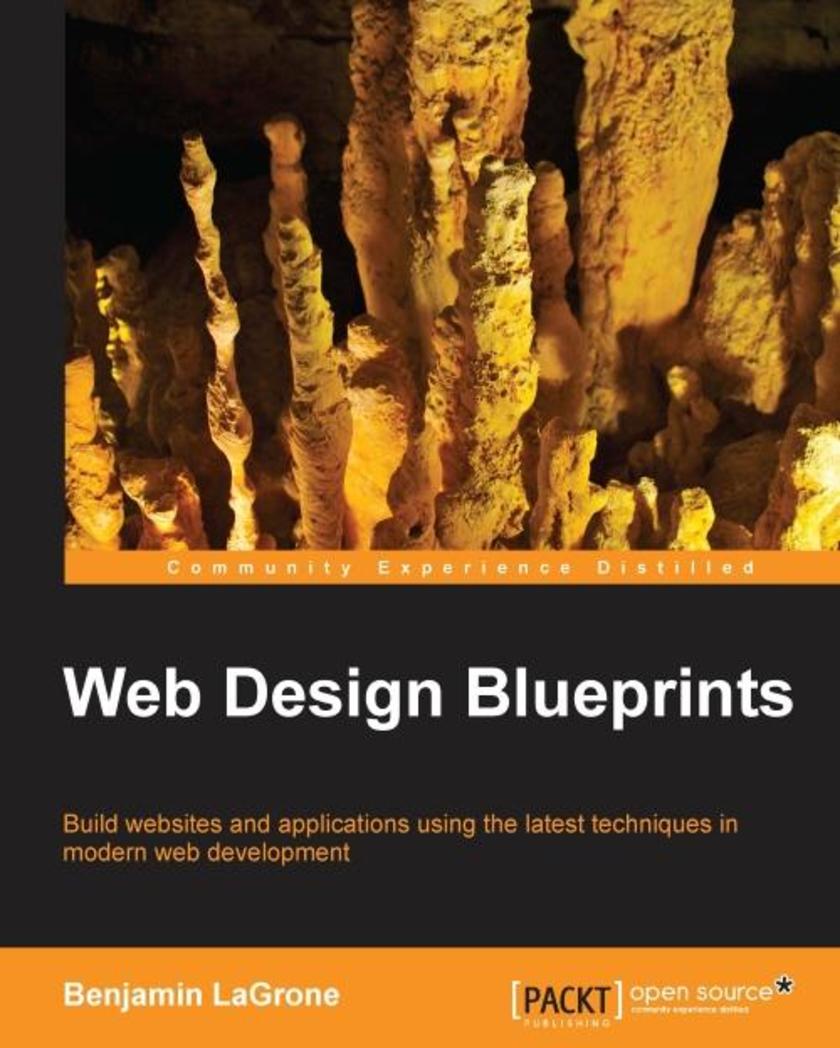
Web Design Blueprints
¥71.93
Build websites and applications using the latest techniques in modern web development About This Book Create amazing modern day applications that run seamlessly across multiple platforms Implement multiple methodologies by creating different apps with dynamic features This unique project-based guide will help you build your own websites efficiently Who This Book Is For This book is a must-have for web developers who want to stay on top of the latest trends in web app and site development. If you are a web developer who is already familiar with HTML, CSS, and functional JavaScript, and you want to learn the latest trends in web development, this is the book for you. What You Will Learn Find out how to create responsive websites Create websites using the principals of Flat design Create deep-dive sites using parallax scrolling Discover how to use Ajax in single-page applications Create responsive navigation with CSS and JavaScript Create responsive padding with the box model property In Detail The book delivers simple instructions on how to design and build modern Web using the latest trends in web development. You will learn how to design responsive websites, created with modern Flat User Interface design patterns, build deep-scrolling websites with parallax 3D effects, and roll-your-own single-page applications. Finally, you'll work through an awesome chapter that combines them all. Each chapter features actual lines of code that you can apply right away. Style and Approach Using real-world examples, Web Design Blueprints presents practical how-to projects for site enhancements, with a light-hearted, easy-to-understand tone. This book has individual projects that cumulate until you finally build a super-project at the end, using all the skills learned
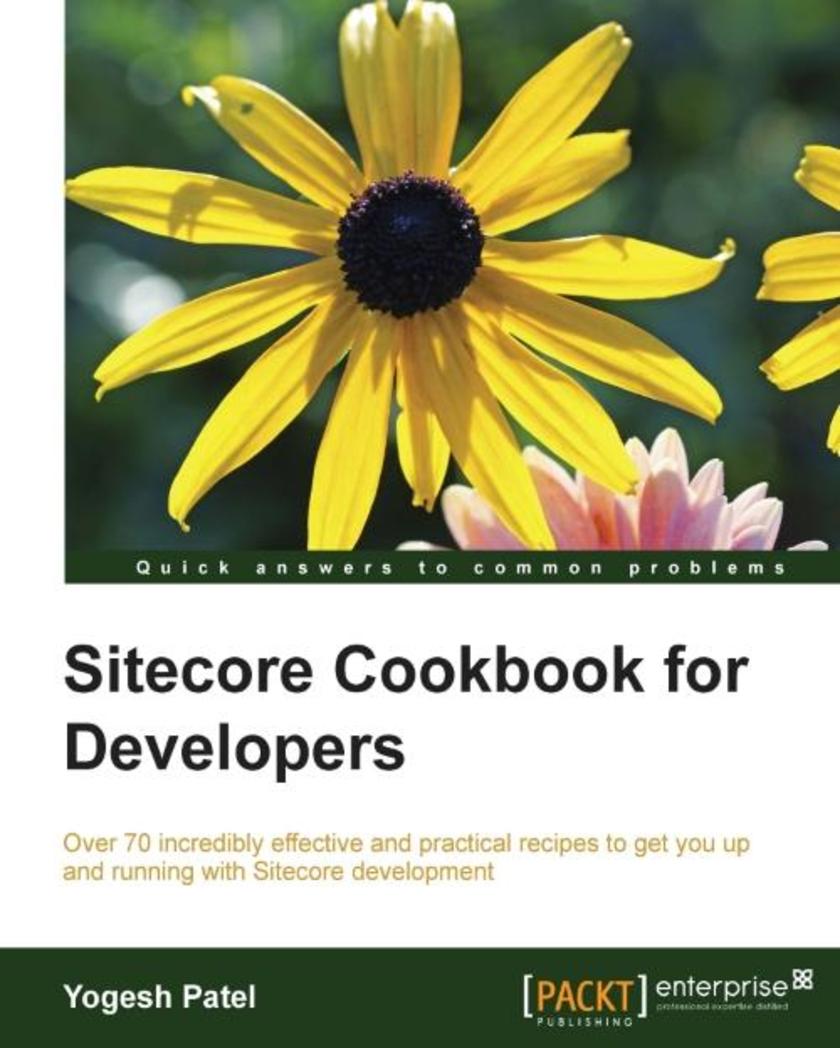
Sitecore Cookbook for Developers
¥90.46
Over 70 incredibly effective and practical recipes to get you up and running with Sitecore development About This Book Build enterprise-level rich websites quickly and deliver the best possible content management to your website Get maximum usage of functionalities like different user interfaces, workflow, publishing, search, analytics, etc and learn different rendering techniques using presentation components for data bindings, events, handlers, schedulers, media, etc. Add a surprising amount of functionality just by customizing the Sitecore architecture through the best practices contained in this book Who This Book Is For If you are a Sitecore developer or a programmer who wants to expand your Sitecore development skills, this book is ideal for you. You will need working knowledge of ASP.NET WebForms or MVC, as well as HTML, and a basic knowledge of Sitecore installation. What You Will Learn Create, access, and personalize your website content using different Sitecore presentation components Learn how to extend the presentation components to fulfill some real-life requiremnts such as improving the site’s performance, generating Rss feeds and so on Work with multiple websites on a single Sitecore instance and create multilingual websites Customize the Sitecore interfaces as per your business requirements to provide easier and error-free user interface to content authors to save time and improve accuracy Customize the Sitecore backend architecture as per your business needs Automate tasks and achieve scalability by altering the development and configuration settings Integrate external systems with Sitecore to import or export content and secure user interactions Integrate the advanced features of analytics and personalization, to get the best possible customer experience and generate its reports In Detail This book will get you started on building rich websites, and customizing user interfaces by creating content management applications quickly. It will give you an insight into web designs and how to customize the Sitecore architecture as per your website's requirements using best practices. Packed with over 70 recipes to help you achieve and solve real-world common tasks, requirements, and the problems of content management, content delivery, and publishing instance environments. It also presents recipes on Sitecore’s backend processes of customizing pipelines, creating custom event handler and media handler, setting hooks to interpret foreign language URL and more. Other topics covered include creating a workflow action, publishing sublayouts and media files, securing your environment by customizing user profiles and access rights, boosting search capabilities, optimising performance, scalability and high-availability of Sitecore instances and much more. By the end of this book, you will have be able to add virtually limitless features to your websites by developing and deploying Sitecore efficiently. Style and approach This easy-to-follow guide is full of hands-on recipes on real-world development tasks to improve your existing Sitecore system. Each topic is presented with its benefits and detailed steps to achieve it through well-explained code and images.

3D Printing Designs: Design an SD Card Holder
¥35.96
Learn how to design 3D-printed objects that work in the real world About This Book This book shows you how to design from a reference to physical objects that can be easily represented by simple basic objects in Blender (cube, cylinder, sphere, and so on) by measuring them This is the only book on the market that shows you how to take your first steps to create 3D printed objects that are able to interact with existing objects Learn how to utilize Blender's functionality to make your designs more precise and accurate Who This Book Is For Reader will have basic knowledge of Blender and 3D Printing, and will have probably already made something simple. They will be interested in printing their first object. What You Will Learn Gain techniques to accurately measure the objects with rules, manual calipers, and digital calipers Break down complex geometries into multiple simple shapes and model them in layers using Blender Scale and re-scale a model to fit based on volume or size constraints See how to multishell geometries and auto-intersections using the Boolean Modifier In Detail Want to model a 3D printed prototype of an object that needs to be replaced or brokenThis book will teach you how to accurately measure objects in the real world with a few basic measuring techniques and how to create an object for 3D printing around the objects measured. In this book, you'll learn to identify basic shapes from a given object, use Vernier and Digital calipers and grid paper tracing techniques to derive measurements for the objects. With the help of measurements, you'll see to model these objects using Blender, organize the parts into layers, and later combine them to create the desired object, which in this book is a 3D printable SD card holder ring that fits your finger. Style and approach This book will be an easy-to-follow guide to learn the methods of scaling, precise measurements, and accurate designing. Using a step-by-step approach, this book will guide you on your journey to model different parts of a complex object and later combine them to create 3D printed objects that work in the real world.
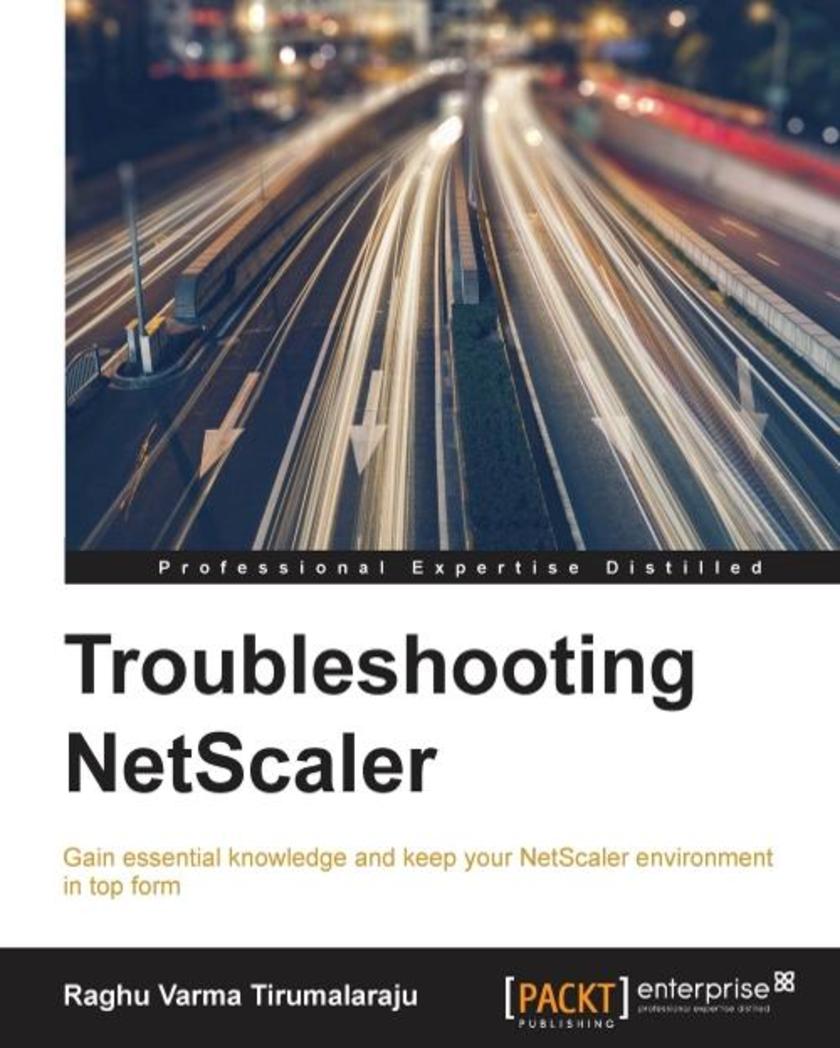
Troubleshooting NetScaler
¥80.65
Gain essential knowledge and keep your NetScaler environment in top form About This Book Learn how the main features - Load Balancing, Content Switching, GSLB, SSL offloading, AAA, AppFirewall, and Gateway work under the hood using vividly explained flows and traces Explore the NetScaler layout and the various logs, tools and methods available to help you when it’s time to debug An easy-to-follow guide, which will walk you through troubleshooting common issues in your NetScaler environment Who This Book Is For This book is aimed at NetScaler administrators who have a basic understanding of the product but are looking for deeper exposure and guidance in identifying and fixing issues to keep their application environment performing optimally. What You Will Learn Troubleshoot traffic management features such as load balancing, SSL, GSLB and content switching Identify issues with caching and compression Deal with authentication issues when using LDAP, RADIUS, certificates, Kerberos and SAML Diagnose NetScaler high availability and networking issues Explore how application firewall protections work and how to avoid false positives Learn about NetScaler Gateway integration issues with XenApp, XenDesktop, and XenMobile Deal with NetScaler system-level issues Discover the NetScaler troubleshooting tools In Detail NetScaler is a high performance Application Delivery Controller (ADC). Making the most of it requires knowledge that straddles the application and networking worlds. As an ADC owner you will also likely be the first person to be solicited when your business applications fail. You will need to be quick in identifying if the problem is with the application, the server, the network, or NetScaler itself. This book provides you with the vital troubleshooting knowledge needed to act fast when issues happen. It gives you a thorough understanding of the NetScaler layout, how it integrates with the network, and what issues to expect when working with the traffic management, authentication, NetScaler Gateway and application firewall features. We will also look at what information to seek out in the logs, how to use tracing, and explore utilities that exist on NetScaler to help you find the root cause of your issues. Style and approach This helpful guide to troubleshooting NetScaler is delivered in a comprehensive and easy-to-follow manner. The topics in the book adopt a step-by-step approach.
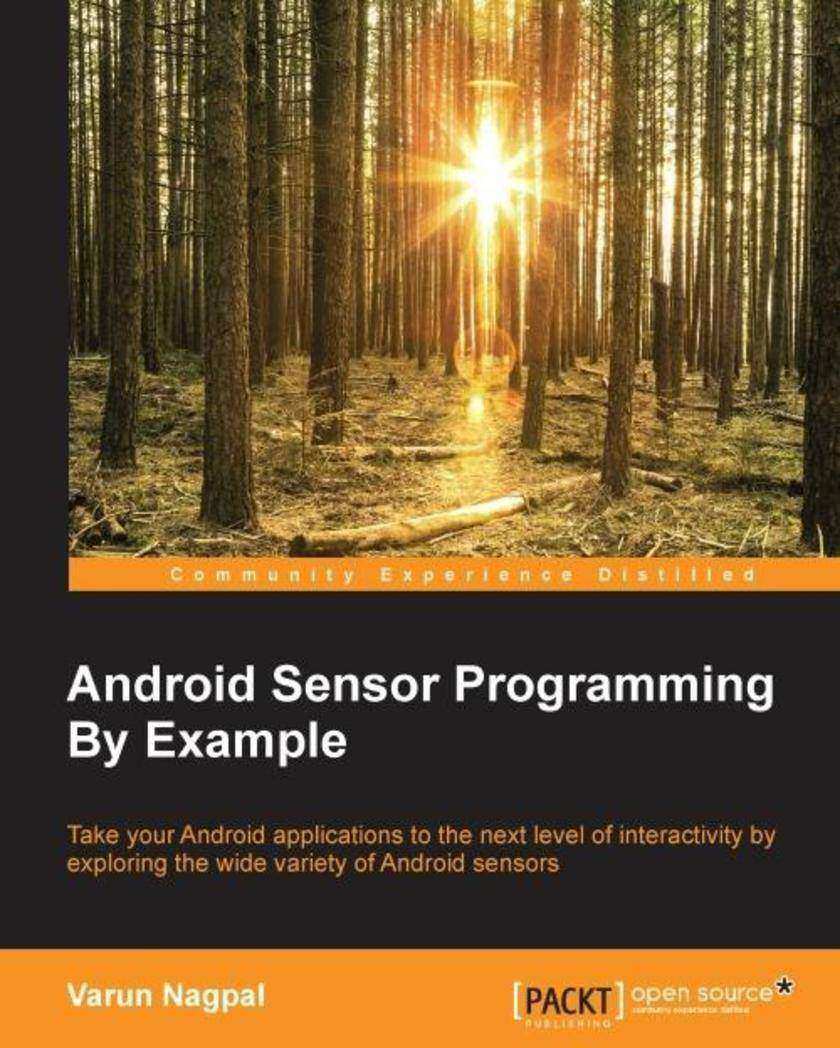
Android Sensor Programming By Example
¥71.93
Take your Android applications to the next level of interactivity by exploring the wide variety of Android sensors About This Book Get a thorough understanding of the fundamentals and framework of Android sensors. Acquire knowledge of advance sensor programming, and learn how to connect and use sensors in external devices such as the Android Watch, Polar heart rate monitors, Adidas speed cells, and so on. Learn from real-world sensor-based applications such as the Pedometer app to detect daily steps, the Driving app to detect driving events, and the Professional Fitness tracker app to track heart rate, weight, daily steps, calories burned, and so on. Who This Book Is For This book is targeted at Android developers who want to get a good understanding of sensors and write sensor-based applications, or who want to enhance their existing applications with additional sensor functionality. A basic knowledge of Android development is required What You Will Learn Learn about sensor fundamentals, different types of sensors, and the sensor co-ordinate system Understand the various classes, callbacks, and APIs of the Android Sensor framework Check all the available sensors on an Android device and know their individual capabilities—for example, their range of values, power consumption, and so on. Implement sensor fusion using two or more sensors together and learn to compensate for the weakness of one sensor by using the strength of another Build a variety of sensor based, real-world applications such as Weather, Pedometer, Compass, Driving Events Detection, Fitness Tracker, and so on. Get to know about wake up and non-wake up sensors, wake locks, and how to use sensor batch processing along with the sensor hardware FIFO queue Develop efficient battery and processor algorithms using raw sensor data to solve real-world problems Connect to a variety of remote sensors such as body weight measurement and body fat percentage measurement using the Google Fit platform from your Android app In Detail Android phones available in today’s market have a wide variety of powerful and highly precise sensors. Interesting applications can be built with them such as a local weather app using weather sensors, analyzing risky driving behavior using motion sensors, a fitness tracker using step-counter sensors, and so on. Sensors in external devices such as Android Watch, Body Analyzer & Weight Machine, Running Speed Cell, and so on can also be connected and used from your Android app running on your phone. Moving further, this book will provide the skills required to use sensors in your Android applications. It will walk you through all the fundamentals of sensors and will provide a thorough understanding of the Android Sensor Framework. You will also get to learn how to write code for the supportive infrastructure such as background services, scheduled and long running background threads, and databases for saving sensor data. Additionally, you will learn how to connect and use sensors in external devices from your Android app using the Google Fit platform. By the end of the book, you will be well versed in the use of Android sensors and programming to build interactive applications. Style and approach A step-by-step and easy-to-follow guide that focuses on utilizing sensors to perform certain tasks. After covering the fundamentals in the first chapter, the book develops the concepts by building a real-world, sensor-based application in subsequent chapters.
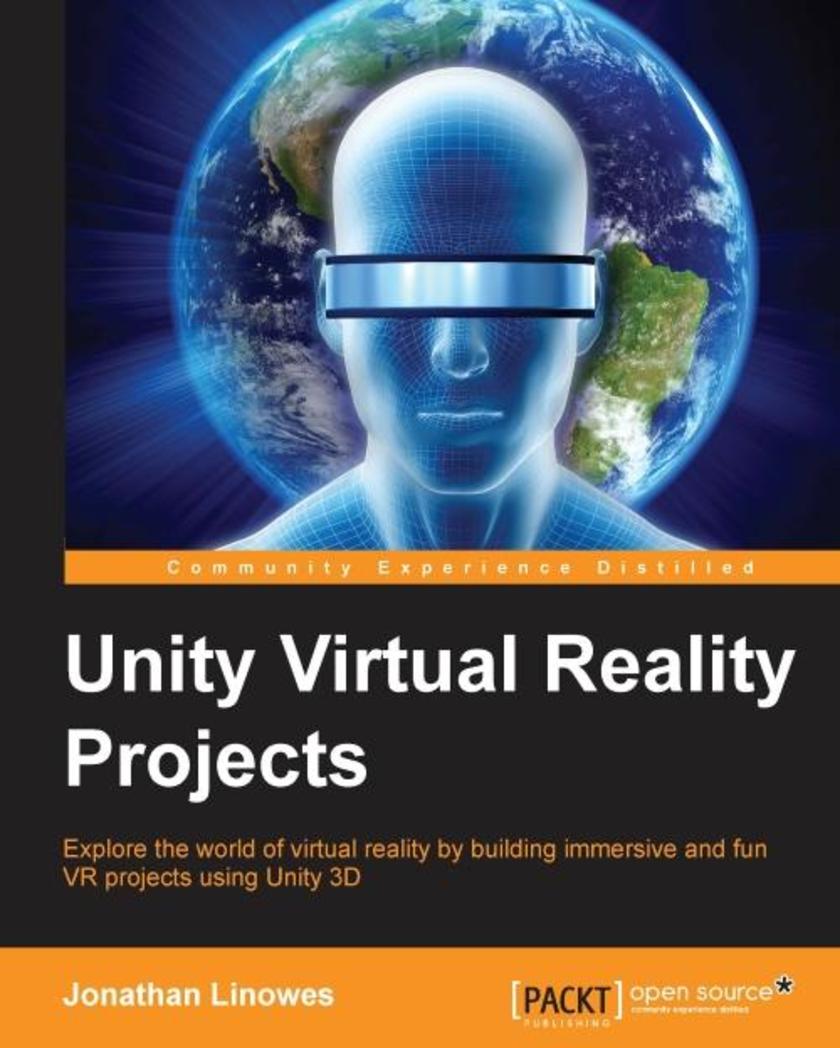
Unity Virtual Reality Projects
¥71.93
Explore the world of Virtual Reality by building immersive and fun VR projects using Unity 3D About This Book Learn the basic principles of virtual reality applications and get to know how they differ from games and desktop apps Build various types of VR experiences, including diorama, first-person characters, riding on rails, 360 degree projections, and social VR A project-based guide that teaches you to use Unity to develop VR applications, which can be experienced with devices such as the Oculus Rift or Google Cardboard Who This Book Is For If you’re a non-programmer unfamiliar with 3D computer graphics, or experienced in both but new to virtual reality, and are interested in building your own VR games or applications then this book is for you. Any experience in Unity is an advantage. What You Will Learn Create 3D scenes with Unity and Blender while learning about world space and scale Build and run VR applications for consumer headsets including Oculus Rift and Google Cardboard Build interactive environments with physics, gravity, animations, and lighting using the Unity engine Experiment with various user interface (UI) techniques that you can use in your VR applications Implement the first-person and third-person experiences that use only head motion gestures for input Create animated walkthroughs, use 360-degree media, and build multi-user social VR experiences Learn about the technology and psychology of VR including rendering, performance and VR motion sickness Gain introductory and advanced experience in Unity programming with the C# language In Detail What is consumer “virtual reality”Wearing a head-mounted display you view stereoscopic 3D scenes. You can look around by moving your head, and walk around using hand controls or motion sensors. You are engaged in a fully immersive experience. On the other hand, Unity is a powerful game development engine that provides a rich set of features such as visual lighting, materials, physics, audio, special effects, and animation for creating 2D and 3D games. Unity 5 has become the leading platform for building virtual reality games, applications and experiences for this new generation of consumer VR devices. Using a practical and project-based approach, this book will educate you about the specifics of virtual reality development in Unity. You will learn how to use Unity to develop VR applications which can be experienced with devices such as the Oculus Rift or Google Cardboard. We will then learn how to engage with virtual worlds from a third person and first person character point of view. Furthermore, you will explore the technical considerations especially important and possibly unique to VR. The projects in the book will demonstrate how to build a variety of VR experiences. You will be diving into the Unity 3D game engine via the interactive Unity Editor as well as C-Sharp programming. By the end of the book, you will be equipped to develop rich, interactive virtual reality experiences using Unity. So, let's get to it! Style and approach This book takes a practical, project-based approach to teach specifics of virtual reality development in Unity. Using a reader-friendly approach, this book will not only provide detailed step-by-step instructions but also discuss the broader context and applications covered within.
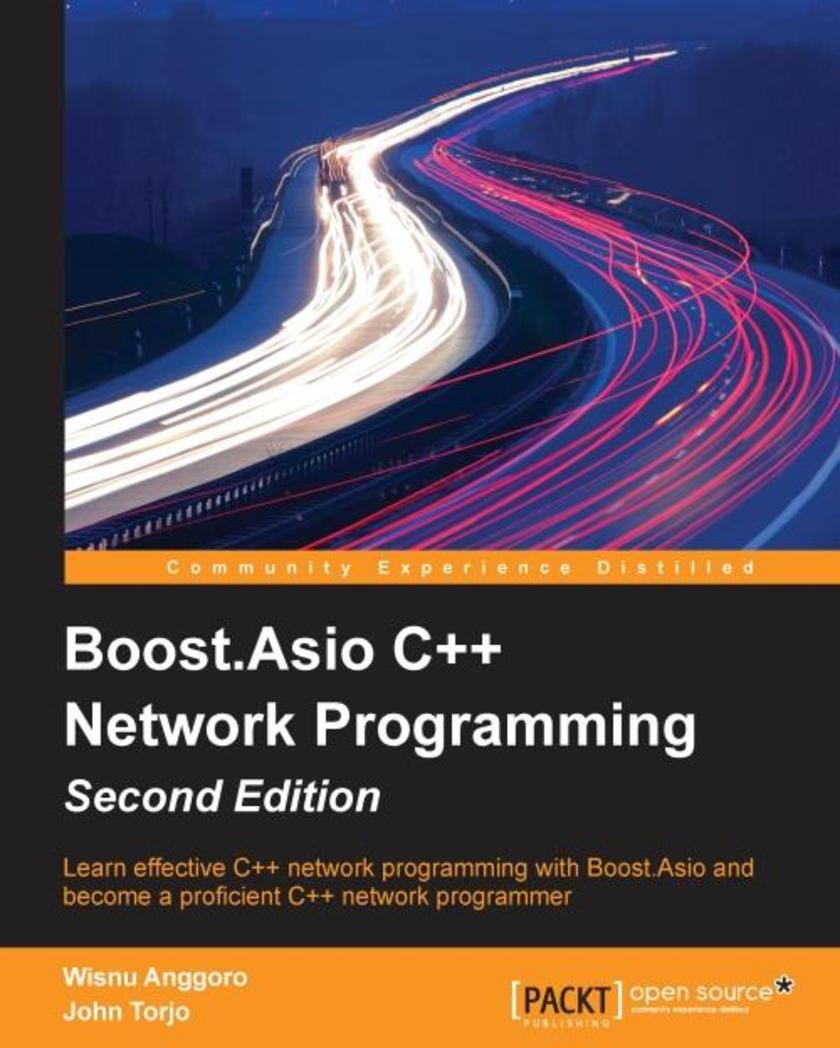
Boost.Asio C++ Network Programming - Second Edition
¥54.49
Learn effective C++ network programming with Boost.Asio and become a proficient C++ network programmer About This Book Learn efficient C++ network programming with minimum coding using Boost.Asio Your one-stop destination to everything related to the Boost.Asio library Explore the fundamentals of networking to choose designs with more examples, and learn the basics of Boost.Asio Who This Book Is For This book is for C++ Network programmers with basic knowledge of network programming, but no knowledge of how to use Boost.Asio for network programming. What You Will Learn Prepare the tools to simplify network programming in C++ using Boost.Asio Explore the networking concepts of IP addressing, TCP/IP ports and protocols, and LAN topologies Get acquainted with the usage of the Boost libraries Get to know more about the content of Boost.Asio network programming and Asynchronous programming Establish communication between client and server by creating client-server application Understand the various functions inside Boost.Asio C++ libraries to delve into network programming Discover how to debug and run the code successfully In Detail Boost.Asio is a C++ library used for network programming operations. Organizations use Boost because of its productivity. Use of these high-quality libraries speed up initial development, result in fewer bugs, reduce reinvention-of-the-wheel, and cut long-term maintenance costs. Using Boost libraries gives an organization a head start in adopting new technologies. This book will teach you C++ Network programming using synchronous and asynchronous operations in Boost.Asio with minimum code, along with the fundamentals of Boost, server-client applications, debugging, and more. You will begin by preparing and setting up the required tools to simplify your network programming in C++ with Boost.Asio. Then you will learn about the basic concepts in networking such as IP addressing, TCP/IP protocols, and LAN with its topologies. This will be followed by an overview of the Boost libraries and their usage. Next you will get to know more about Boost.Asio and its concepts related to network programming. We will then go on to create a client-server application, helping you to understand the networking concepts. Moving on, you will discover how to use all the functions inside the Boost.Asio C++ libraries. Lastly, you will understand how to debug the code if there are errors found and will run the code successfully. Style and approach An example-oriented book to show you the basics of networking and help you create a network application simply using Boost.Asio, with more examples for you to get up and running with Boost.Asio quickly.
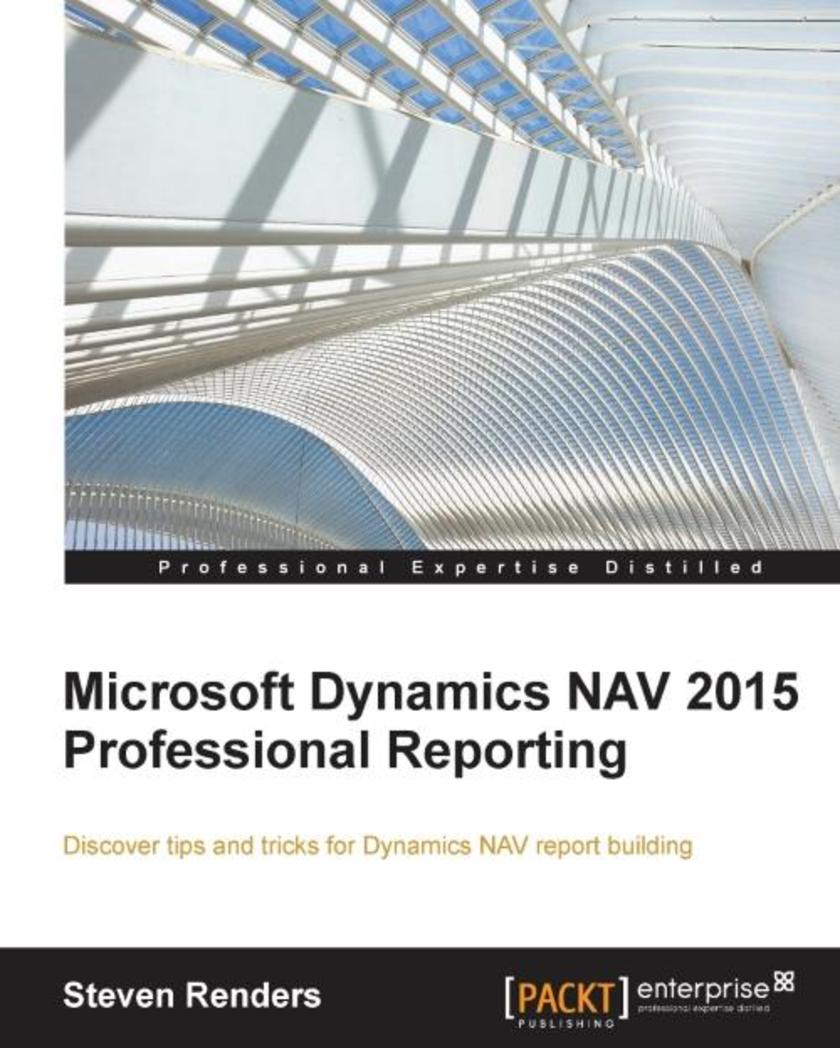
Microsoft Dynamics NAV 2015 Professional Reporting
¥107.90
Discover tips and trick for Dynamics NAV report building About This Book Create and customize reports in Dynamics NAV 2015 using RDLC, Word, Power BI, and Reporting Services Work with different elements in the toolbox such as tablix, which can be used as a List, Table, or Matrix and understand the differences between them and when to use which This book is a pragmatic guide with clear instructions and real-world examples to teach you about the reporting capabilities of Dynamics NAV 2015 Who This Book Is For If you are a consultant, developer, customer, user, or just interested in the reporting capabilities of Dynamics NAV, then this book is for you. Basic knowledge of Dynamics NAV will be helpful. What You Will Learn Understand why reports are designed in a specific way and then apply this knowledge to your advantage Develop document reports using different techniques Apply filtering and sorting, and create groups Use RDLC to visualize information Visualize information, KPIs, and trends using expressions, Gauges, Charts, Data bars, Indicators, and Spark lines Create and optimize your dataset for RDLC and for Word layouts Use Power BI with Dynamics NAV to bring your data to life Build Reporting Services reports on top of Dynamics NAV In Detail Microsoft Dynamics NAV is a multi-lingual, multi-currency business management solution that organizations use to manage their accounts, supply chain, sales, payroll, and HR. It is an ERP tool for organizations that is fast to implement, easy to configure, and simple to use. It is widely used because simplicity is a part of its development, product design, usability, and implementation. This book will help you to master, analyze, and deliver the most challenging reporting requirements in Dynamics NAV 2015. The book starts by explaining report development and it's different phases such as data model, layout, and testing you go through. It introduces you to RDLC and the different controls in the toolbox, such as the Tablix, in its many forms. You will learn to use expressions to make your layout dynamic and to overcome typical problems. Moving on, the book will teach you to visualize data and be able to understand and read a report as it is intended. You will also learn to use Microsoft Word to create a layout for a report. With Power BI and Power Pivot, Power View, and Power Map, you will learn how easy and powerful it is to bring your data to life, so you can spot trends and perform in depth analysis of your business. Reporting Services is also explained as another way that you can apply the knowledge you have about RDLC to build RDL layouts outside of Dynamics NAV. By the end, you will create different types of charts so you can visualize key performance indicators inside the Dynamics NAV application. Style and approach This book is an essential guide in to understanding what is involved in creating reports in Dynamics NAV and its reporting capabilities.
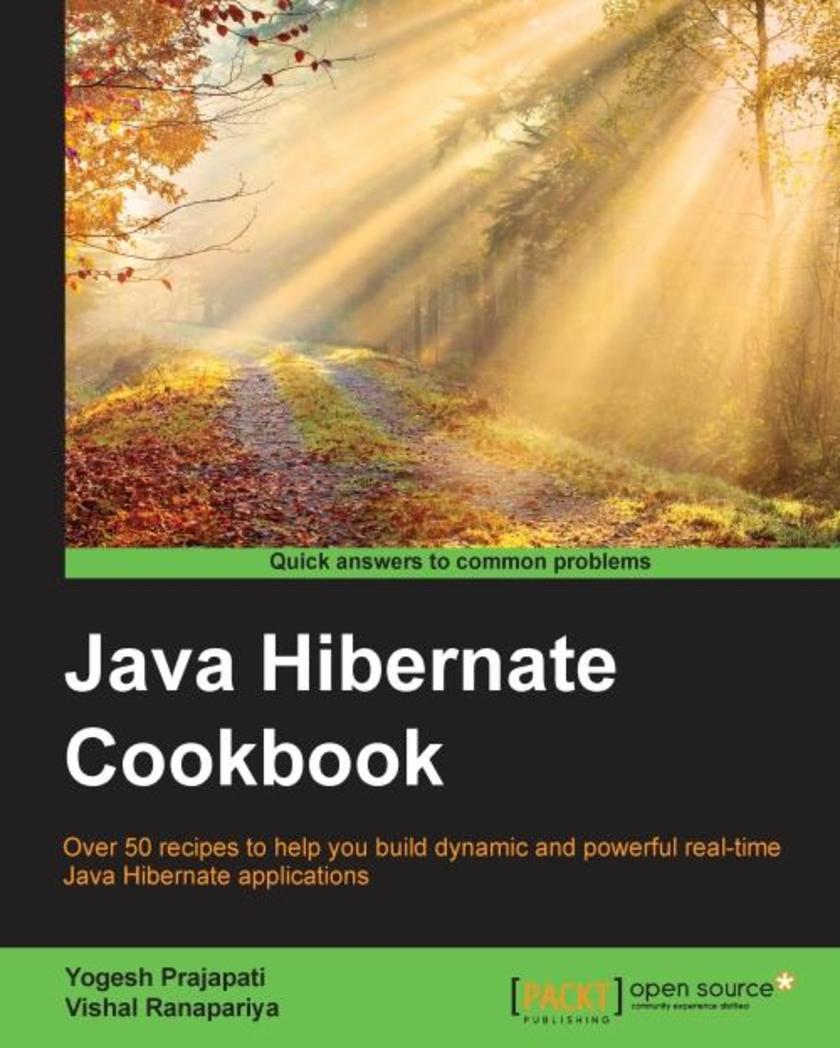
Java Hibernate Cookbook
¥80.65
Over 50 recipes to help you build dynamic and powerful real-time Java Hibernate applications About This Book Learn to associate JDBC and Hibernate with object persistence Manage association mappings, implement basic annotations and learn caching Get to grips with Hibernate fundamentals from installation to developing a business application with this step-by-step guide Who This Book Is For This is book for Java developers who now want to learn Hibernate. Good knowledge and understanding of Java is preferred to allow efficient programming of the core elements and applications; it would be helpful if readers are familiar with the basics of SQL. What You Will Learn Set up and install Hibernate on your system and explore different ways in which Hibernate can be configured Learn the basic concepts and fundamentals of Java Hibernate Define mappings without a use of XML file using Annotations Persist collection elements such as list, map, set and array Explore the various mapping options and learn to work with Hibernate associations Understand advanced Hibernate concepts such as caching and inheritance Develop an engaging and robust real-world hibernate application based on a common business scenario Integrate Hibernate with other frameworks to develop robust enterprise applications In Detail Hibernate is a database independent technology, so the same code will work for all databases. It helps a Java developer write a query by mapping Java bean to database tables and help create tuned queries that boost performance. Even with limited SQL knowledge one can easily perform database operations. This makes the development faster and more accurate than JDBC. Hibernate supports useful features like connection pooling, caching, and inheritance etc. This book will provide a useful hands-on guide to Hibernate to accomplish the development of a real-time Hibernate application. We will start with the basics of Hibernate, which include setting up Hibernate – the pre-requisites and multiple ways of configuring Hibernate using Java. We will then dive deep into the fundamentals of Hibernate such as SessionFactory, session, criteria, working with objects and criteria. This will help a developer have a better understanding of how Hibernate works and what needs to be done to run a Hibernate application. Moving on, we will learn how to work with annotations, associations and collections. In the final chapters, we will see explore querying, advanced Hibernate concepts and integration with other frameworks. Style and approach This book is a practical guide filled with carefully organized step-by-step instructions. All recipes are arranged in an easy-to understand and clear manner allowing you to apply the solutions to other situations.
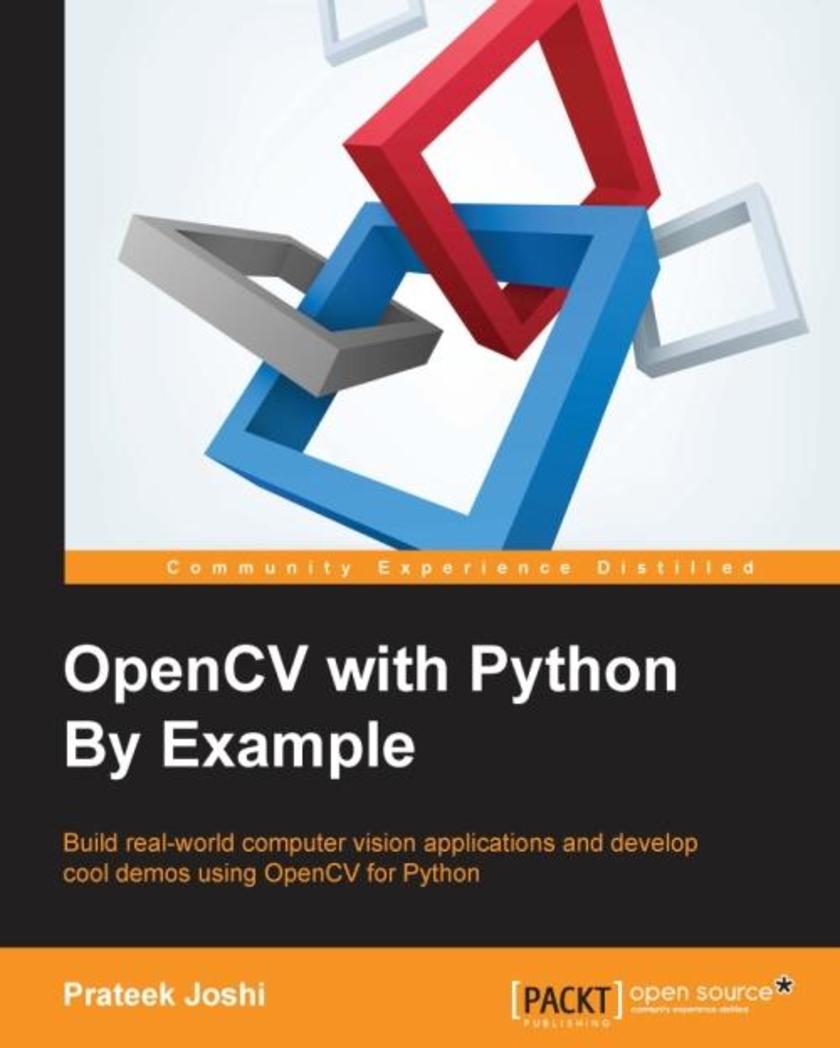
OpenCV with Python By Example
¥90.46
Build real-world computer vision applications and develop cool demos using OpenCV for Python About This Book Learn how to apply complex visual effects to images using geometric transformations and image filters Extract features from an image and use them to develop advanced applications Build algorithms to help you understand the image content and perform visual searches Who This Book Is For This book is intended for Python developers who are new to OpenCV and want to develop computer vision applications with OpenCV-Python. This book is also useful for generic software developers who want to deploy computer vision applications on the cloud. It would be helpful to have some familiarity with basic mathematical concepts such as vectors, matrices, and so on. What You Will Learn Apply geometric transformations to images, perform image filtering, and convert an image into a cartoon-like image Detect and track various body parts such as the face, nose, eyes, ears, and mouth Stitch multiple images of a scene together to create a panoramic image Make an object disappear from an image Identify different shapes, segment an image, and track an object in a live video Recognize an object in an image and build a visual search engine Reconstruct a 3D map from images Build an augmented reality application In Detail Computer vision is found everywhere in modern technology. OpenCV for Python enables us to run computer vision algorithms in real time. With the advent of powerful machines, we are getting more processing power to work with. Using this technology, we can seamlessly integrate our computer vision applications into the cloud. Web developers can develop complex applications without having to reinvent the wheel. This book will walk you through all the building blocks needed to build amazing computer vision applications with ease. We start off with applying geometric transformations to images. We then discuss affine and projective transformations and see how we can use them to apply cool geometric effects to photos. We will then cover techniques used for object recognition, 3D reconstruction, stereo imaging, and other computer vision applications. This book will also provide clear examples written in Python to build OpenCV applications. The book starts off with simple beginner’s level tasks such as basic processing and handling images, image mapping, and detecting images. It also covers popular OpenCV libraries with the help of examples. The book is a practical tutorial that covers various examples at different levels, teaching you about the different functions of OpenCV and their actual implementation. Style and approach This is a conversational-style book filled with hands-on examples that are really easy to understand. Each topic is explained very clearly and is followed by a programmatic implementation so that the concept is solidified. Each topic contributes to something bigger in the following chapters, which helps you understand how to piece things together to build something big and complex.
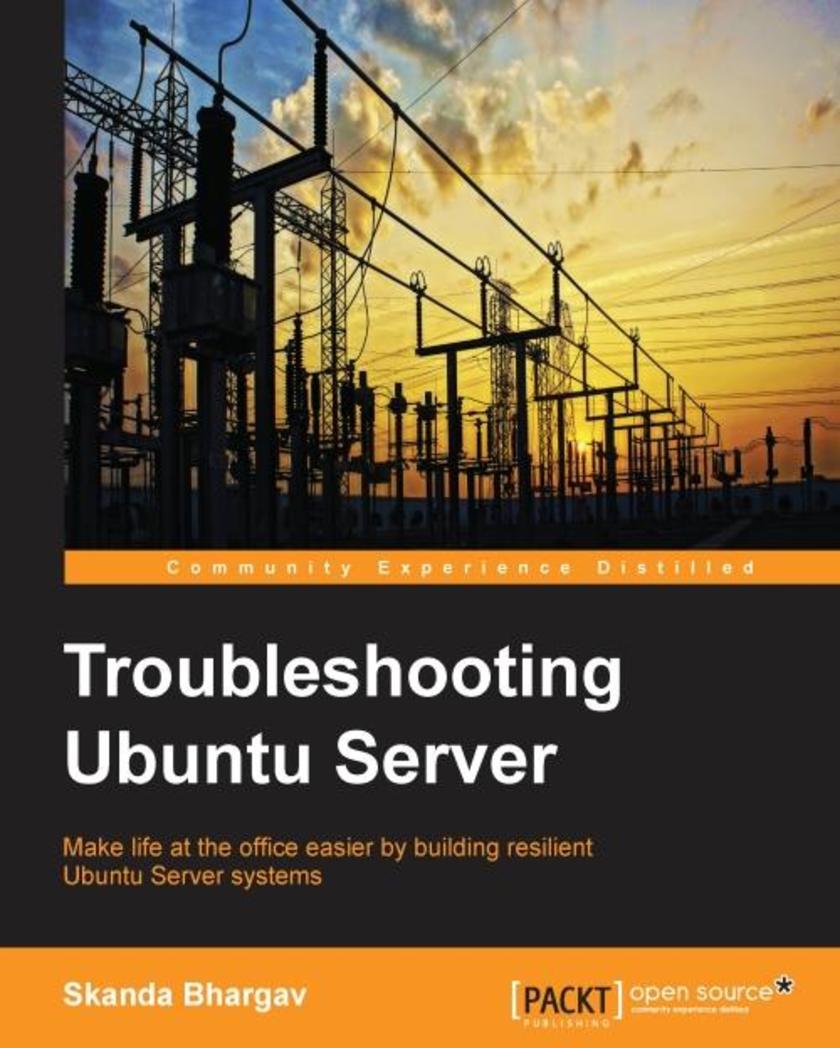
Troubleshooting Ubuntu Server
¥80.65
Make life at the office easier for server administrators by helping them build resilient Ubuntu server systems About This Book Tackle the issues you come across in keeping your Ubuntu server up and running Build server machines and troubleshoot cloud computing related issues using Open Stack Discover tips and best practices to be followed for minimum maintenance of Ubuntu Server 3 Who This Book Is For This book is for a vast audience of Linux system administrators who primarily work on Debian-based systems and spend long hours trying fix issues with the enterprise server. Ubuntu is already one of the most popular OSes and this book targets the most common issues that most administrators have to deal with. With the right tools and definite solutions, you will be able to keep your Ubuntu servers in the pink of health. What You Will Learn Deploy packages and their dependencies with repositories Set up your own DNS and network for Ubuntu Server Authenticate and validate users and their access to various systems and services Maintain, monitor, and optimize your server resources and avoid tremendous load Get to know about processes, assigning and changing priorities, and running processes in background Optimize your shell with tools and provide users with an improved shell experience Set up separate environments for various services and run them safely in isolation Understand, build, and deploy OpenStack on your Ubuntu Server In Detail Ubuntu is becoming one of the favorite Linux flavors for many enterprises and is being adopted to a large extent. It supports a wide variety of common network systems and the use of standard Internet services including file serving, e-mail, Web, DNS, and database management. A large scale use and implementation of Ubuntu on servers has given rise to a vast army of Linux administrators who battle it out day in and day out to make sure the systems are in the right frame of operation and pre-empt any untoward incidents that may result in catastrophes for the businesses using it. Despite all these efforts, glitches and bugs occur that affect Ubuntu server's network, memory, application, and hardware and also generate cloud computing related issues using OpenStack. This book will help you end to end. Right from setting up your new Ubuntu Server to learning the best practices to host OpenStack without any hassles. You will be able to control the priority of jobs, restrict or allow access users to certain services, deploy packages, tackle issues related to server effectively, and reduce downtime. Also, you will learn to set up OpenStack, and manage and monitor its services while tuning the machine with best practices. You will also get to know about Virtualization to make services serve users better. Chapter by chapter, you will learn to add new features and functionalities and make your Ubuntu server a full-fledged, production-ready system. Style and approach This book contains topic-by-topic discussion in an easy-to-understand language with loads of examples to help you take care of Ubuntu Server. Plenty of screenshots will guide you through a step-by-step approach.
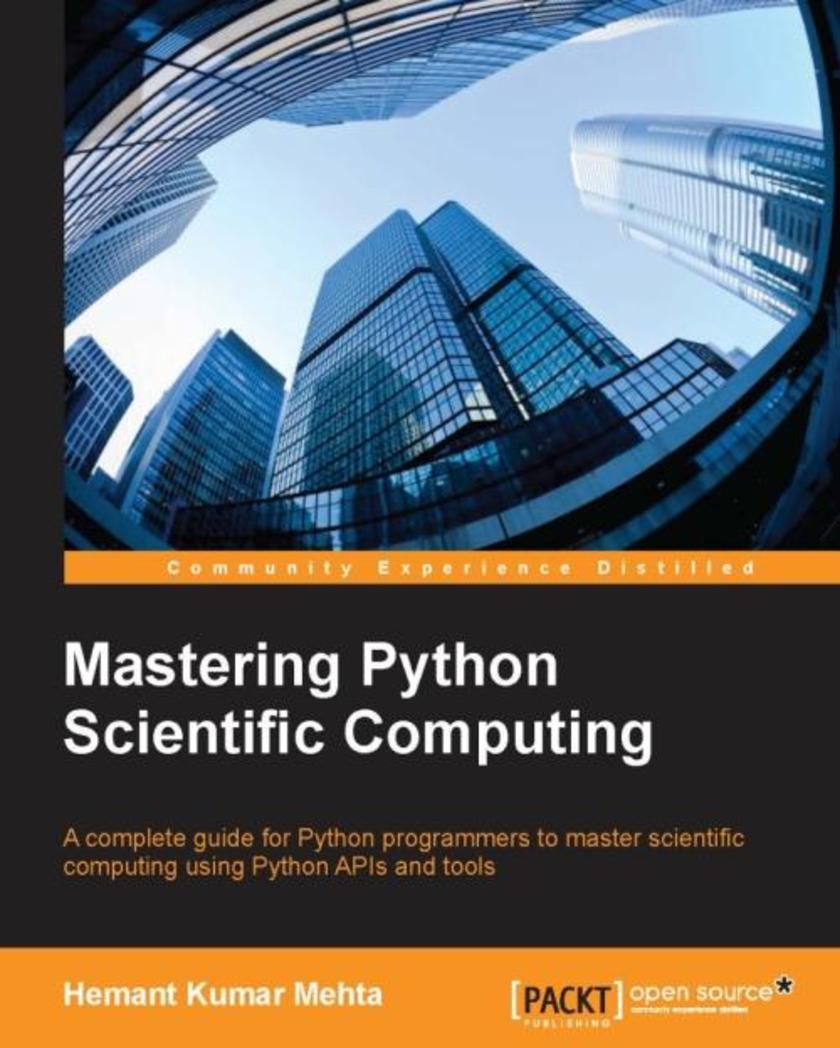
Mastering Python Scientific Computing
¥71.93
A complete guide for Python programmers to master scientific computing using Python APIs and tools About This Book The basics of scientific computing to advanced concepts involving parallel and large scale computation are all covered. Most of the Python APIs and tools used in scientific computing are discussed in detail The concepts are discussed with suitable example programs Who This Book Is For If you are a Python programmer and want to get your hands on scientific computing, this book is for you. The book expects you to have had exposure to various concepts of Python programming. What You Will Learn Fundamentals and components of scientific computing Scientific computing data management Performing numerical computing using NumPy and SciPy Concepts and programming for symbolic computing using SymPy Using the plotting library matplotlib for data visualization Data analysis and visualization using Pandas, matplotlib, and IPython Performing parallel and high performance computing Real-life case studies and best practices of scientific computing In Detail In today's world, along with theoretical and experimental work, scientific computing has become an important part of scientific disciplines. Numerical calculations, simulations and computer modeling in this day and age form the vast majority of both experimental and theoretical papers. In the scientific method, replication and reproducibility are two important contributing factors. A complete and concrete scientific result should be reproducible and replicable. Python is suitable for scientific computing. A large community of users, plenty of help and documentation, a large collection of scientific libraries and environments, great performance, and good support makes Python a great choice for scientific computing. At present Python is among the top choices for developing scientific workflow and the book targets existing Python developers to master this domain using Python. The main things to learn in the book are the concept of scientific workflow, managing scientific workflow data and performing computation on this data using Python. The book discusses NumPy, SciPy, SymPy, matplotlib, Pandas and IPython with several example programs. Style and approach This book follows a hands-on approach to explain the complex concepts related to scientific computing. It details various APIs using appropriate examples.
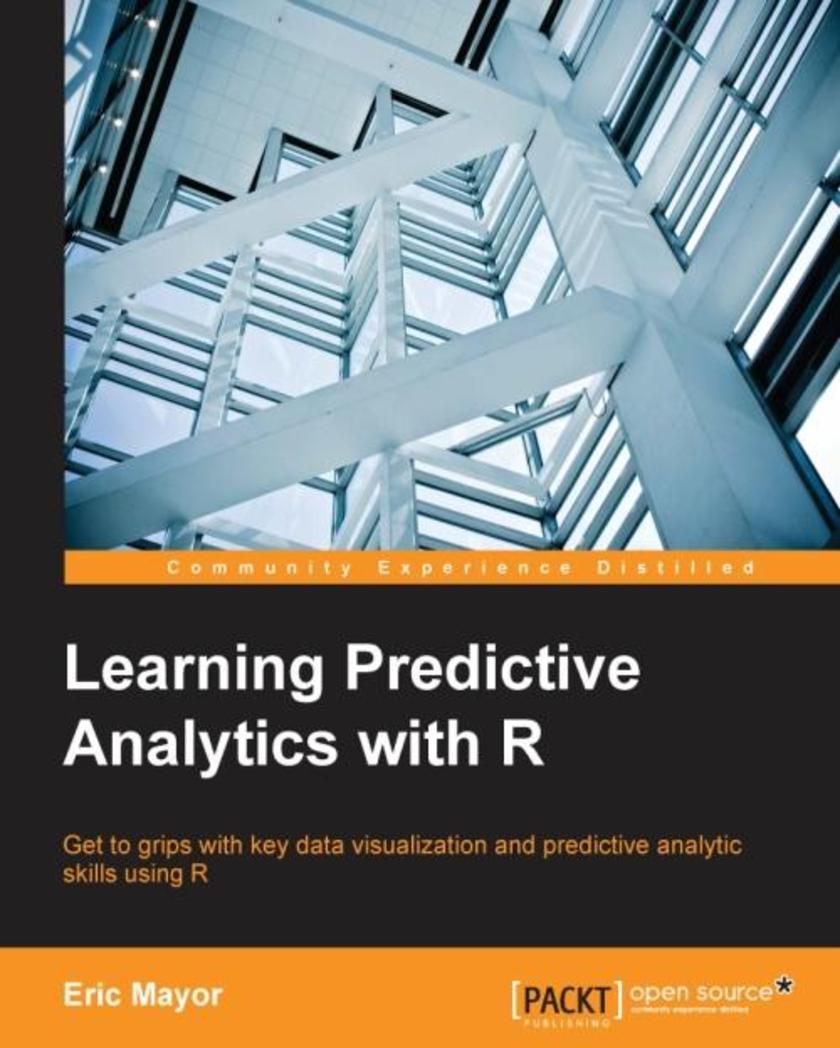
Learning Predictive Analytics with R
¥90.46
Get to grips with key data visualization and predictive analytic skills using R About This Book Acquire predictive analytic skills using various tools of R Make predictions about future events by discovering valuable information from data using R Comprehensible guidelines that focus on predictive model design with real-world data Who This Book Is For If you are a statistician, chief information officer, data scientist, ML engineer, ML practitioner, quantitative analyst, and student of machine learning, this is the book for you. You should have basic knowledge of the use of R. Readers without previous experience of programming in R will also be able to use the tools in the book. What You Will Learn Customize R by installing and loading new packages Explore the structure of data using clustering algorithms Turn unstructured text into ordered data, and acquire knowledge from the data Classify your observations using Na?ve Bayes, k-NN, and decision trees Reduce the dimensionality of your data using principal component analysis Discover association rules using Apriori Understand how statistical distributions can help retrieve information from data using correlations, linear regression, and multilevel regression Use PMML to deploy the models generated in R In Detail R is statistical software that is used for data analysis. There are two main types of learning from data: unsupervised learning, where the structure of data is extracted automatically; and supervised learning, where a labeled part of the data is used to learn the relationship or scores in a target attribute. As important information is often hidden in a lot of data, R helps to extract that information with its many standard and cutting-edge statistical functions. This book is packed with easy-to-follow guidelines that explain the workings of the many key data mining tools of R, which are used to discover knowledge from your data. You will learn how to perform key predictive analytics tasks using R, such as train and test predictive models for classification and regression tasks, score new data sets and so on. All chapters will guide you in acquiring the skills in a practical way. Most chapters also include a theoretical introduction that will sharpen your understanding of the subject matter and invite you to go further. The book familiarizes you with the most common data mining tools of R, such as k-means, hierarchical regression, linear regression, association rules, principal component analysis, multilevel modeling, k-NN, Na?ve Bayes, decision trees, and text mining. It also provides a de*ion of visualization techniques using the basic visualization tools of R as well as lattice for visualizing patterns in data organized in groups. This book is invaluable for anyone fascinated by the data mining opportunities offered by GNU R and its packages. Style and approach This is a practical book, which analyzes compelling data about life, health, and death with the help of tutorials. It offers you a useful way of interpreting the data that’s specific to this book, but that can also be applied to any other data.
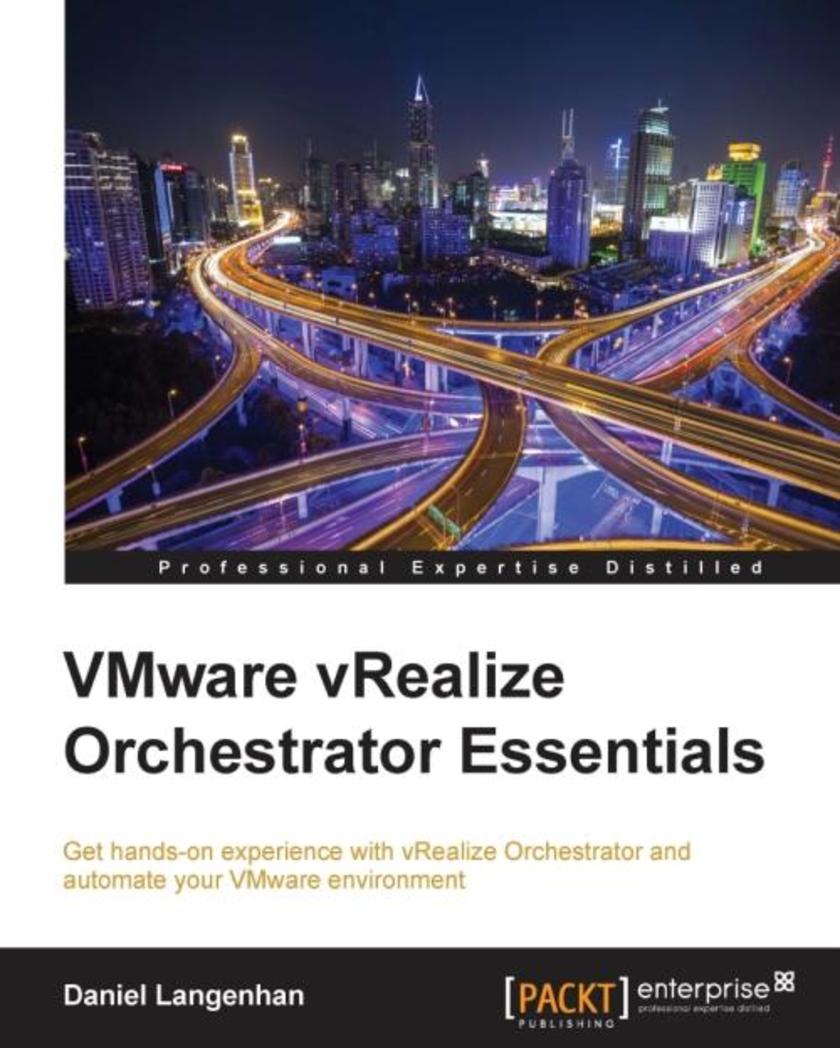
VMware vRealize Orchestrator Essentials
¥80.65
Get hands-on experience with vRealize Orchestrator and automate your VMware environment About This Book Gain an in-depth understanding of vRO in the VMware infrastructure Create your own advanced vRO *s using JavaScript A step-by-step tutorial to manage and create workflows with vRO Who This Book Is For This book is for VMware vSphere administrators who have minimal experience with automation tools and want to learn how to effectively automate their environment with VMware vRealize Orchestrator. A basic understanding of the VMware vSphere terms and concepts would be helpful. What You Will Learn Familiarize yourself with the Orchestrator architecture and Explore how plugins can expand Orchestrator's capabilitiesExplore how plug-ins can expand Orchestrator’s capabilities Deploy and configure the vRealize Orchestrator appliance Schedule and run workflows using the vSphere Web Client Create your own workflows with minimal work Use workflow presentations to improve your automation projects Integrate JavaScript to enhance your workflows Debug your workflows for errors and fix them Learn how to create, import, and export packages, to enable easy exchange solutions with others In Detail The automation of virtual environments has become the focus of many endeavors. VMware vRealize Orchestrator is a tool that enables you to automate not only your VMware environments, but also the surrounding hardware and software infrastructure. Orchestrator is also a central tool in the VMware cloud initiative and is extensively used by products such as vRealize Automation. In this book, you will learn how Orchestrator is able to help you automate your complete VMware infrastructure as well as its surrounding hardware and software. After deploying and configuring the vRealize Orchestrator appliance, you will learn how to run the existing workflows that are a part of the Orchestrator library. You will also see how the vSphere Web Client integration of Orchestrator reduces the time you spend on your daily admin tasks. The main aspect here is to learn how to create new workflows from existing ones. You will also look at how you can create completely new workflows. This includes learning about JavaScript and using presentation features to improve the layout and user friendliness of your workflows. Toward the end, you will learn to check for errors in your workflows and debug them. By the time you're done with the book, you'll be proficient in managing your workflows. Style and approach This book follows a sequential approach with ample screenshots in the examples that convey a deeper understanding of all Orchestrator-related tasks.
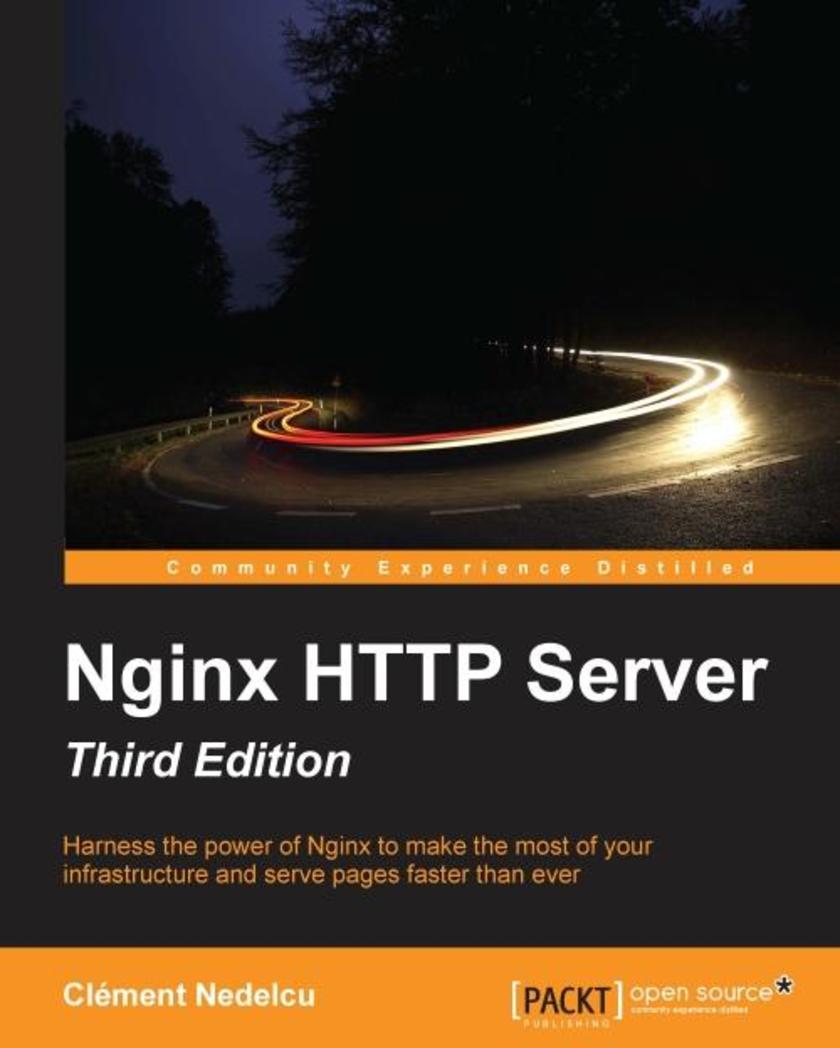
Nginx HTTP Server - Third Edition
¥80.65
Harness the power of Nginx to make the most of your infrastructure and serve pages faster than ever About This Book ?Discover possible interactions between Nginx and Apache to get the best of both worlds ?Learn to exploit the features offered by NGinx for your web applications ?Get the newest techniques available, designed with the latest version in mind Who This Book Is For By covering both the early setup stages and advanced topics, this book suits web administrators who interested in solutions to optimize their infrastructure, whether you are looking into replacing your existing web server software or integrating a new tool to cooperate with applications that are already up and running. If you, your visitors, and your operating system have been disappointed by Apache, this book is exactly what you need. What You Will Learn ?Get to know the basics of the Nginx configuration: syntax, structure, and semantics ?Understand the advanced load balancing functionality of Nginx and the newest innovative IO mechanisms ?Create virtual host configurations effortlessly ?Discover all the first-party modules: how to enable, configure, and use them ?Establish advanced rewrite rules with the Nginx Rewrite module ?Set up Nginx to work with PHP, Python, and more via FastCGI ?Configure Nginx to work as frontend for your existing HTTP server ?Manipulate configuration files with ease and adapt them to various situations ?Discover the common pitfalls and find out how to avoid them In Detail Nginx is a lightweight HTTP server designed for high-traffic websites, with network scalability as the primary objective. With the advent of high speed Internet access, short loading times and fast transfer rates have become a necessity. This free, open source solution will either come as a full replacement of other software such as Apache, or stand in front of your existing infrastructure to improve its overall speed. This book is a detailed guide to setting up Nginx in different ways that correspond to actual production situations: as a standalone server, as a reverse proxy, interacting with applications via FastCGI, and more. In addition, this complete directive reference will be your best friend at all stages of the configuration and maintenance processes. This book is the perfect companion for both Nginx beginners and experienced administrators. For beginners, it will take you through the complete process of setting up this lightweight HTTP server on your system and configuring its various modules so it does exactly what you need quickly and securely. For more experienced administrators, this book provides different approaches that can help you make the most of your current infrastructure. Nginx can be employed in many situations, whether you are looking to construct an entirely new web-serving architecture or simply want to integrate an efficient tool to optimize your site loading speeds. Style and approach This tutorial-style book includes detailed instructions on each of the processes it describes, as well as step-by-step tutorials, commented configuration sections, and in-depth module de*ions, so you can make the most of the performance potential offered by Nginx.
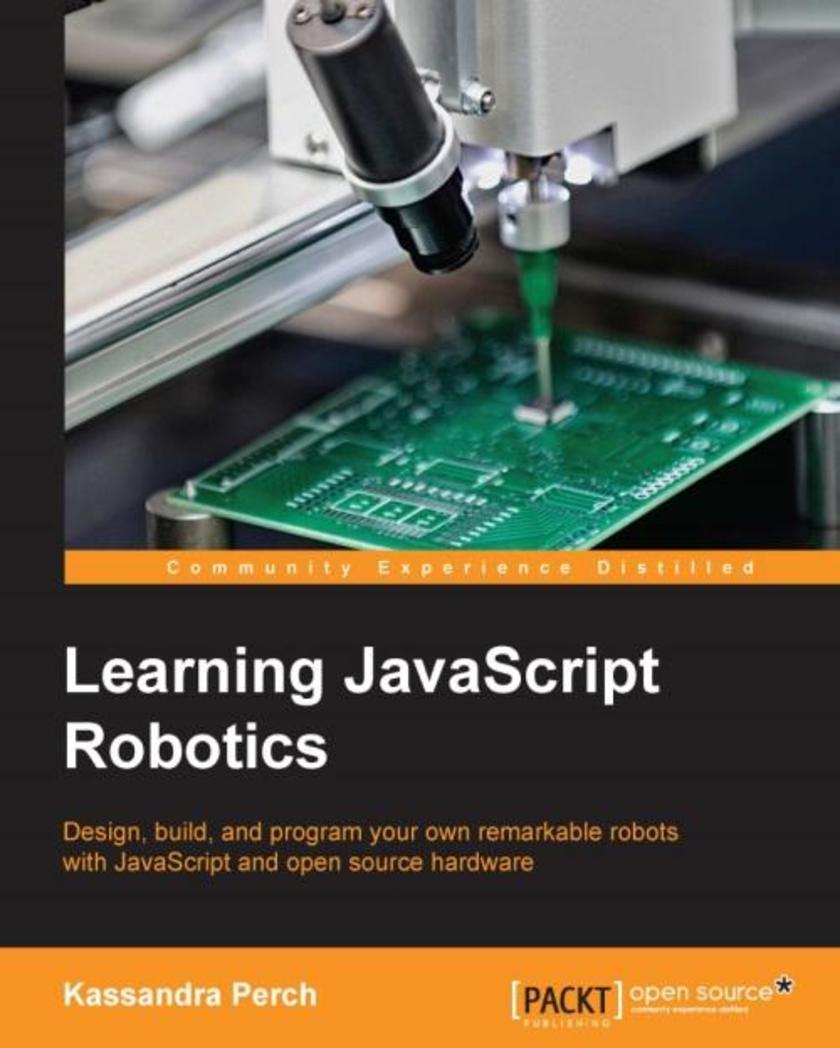
Learning JavaScript Robotics
¥54.49
Design, build, and program your own remarkable robots with JavaScript and open source hardware About This Book Learn how to leverage Johnny-Five's Read, Eval, Print Loop, and Event API to write robot code with JavaScript Unlock a world of exciting possibilities by hooking your JavaScript-programmed robots up to the internet and using external data and APIs Move your project code from the Arduino Uno to a multitude of other robotics platforms Who This Book Is For If you've worked with Arduino before or are new to electronics and would like to try writing sketches in JavaScript, then this book is for you! Basic knowledge of JavaScript and Node.js will help you get the most out of this book. What You Will Learn Familiarise yourself with Johnny-Five Read, Eval, and Print Loop (REPL) to modify and debug robotics code in real time Build robots with basic output devices to create projects that light up, make noise, and more Create projects with complex output devices, and employ the Johnny-Five API to simplify the use of components that require complex interfaces, such as I2C Make use of sensors and input devices to allow your robotics projects to survey the world around them and accept input from users Use the Sensor and Motor objects to make it much easier to move your robotics projects Learn about the Animation API that will allow you to program complex movements using timing and key frames Bring in other devices to your Johnny-Five projects, such as USB devices and remotes Connect your Johnny-Five projects to external APIs and create your own Internet of Things! In Detail There has been a rapid rise in the use of JavaScript in recent times in a variety of applications, and JavaScript robotics has seen a rise in popularity too. Johnny-Five is a framework that gives NodeBots a consistent API and platform across several hardware systems. This book walks you through basic robotics projects including the physical hardware builds and the JavaScript code for them. You'll delve into the concepts of Johnny-Five and JS robotics. You'll learn about various components such as Digital GPIO pins, PWM output pins, Sensors, servos, and motors to be used with Johnny-Five along with some advanced components such as I2C, and SPI. You will learn to connect your Johnny-Five robots to internet services and other NodeBots to form networks. By the end of this book, you will have explored the benefits of the Johnny-Five framework and the many devices it unlocks. Style and approach This step-by-step guide to the Johnny-Five ecosystem is explained in a conversational style, packed with examples and tips. Each chapter also explores the Johnny-Five documentation to enable you to start exploring the API on your own.




 购物车
购物车 个人中心
个人中心



